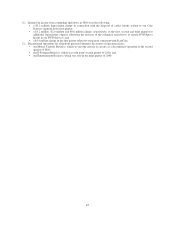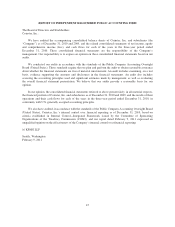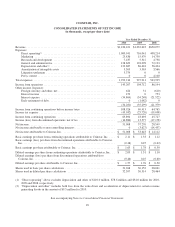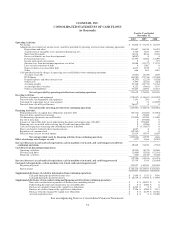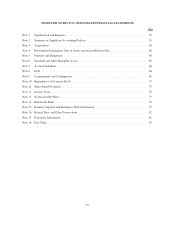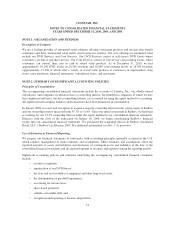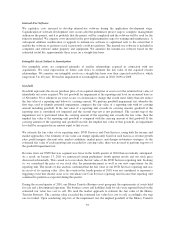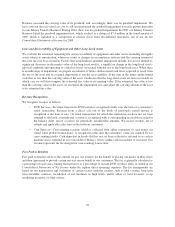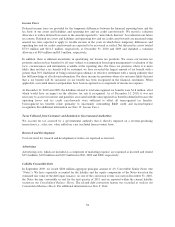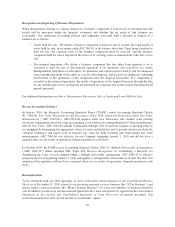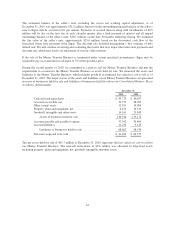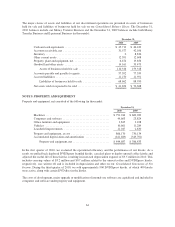Redbox 2010 Annual Report Download - page 62
Download and view the complete annual report
Please find page 62 of the 2010 Redbox annual report below. You can navigate through the pages in the report by either clicking on the pages listed below, or by using the keyword search tool below to find specific information within the annual report.
It is reasonably possible that the estimates we make may change in the future.
Cash and Cash Equivalents
Included in cash and cash equivalents were cash equivalents of $71.3 million and $19.4 million at December 31,
2010 and 2009, respectively, which consisted of money market funds, and are stated at cost, which approximates
market value. We consider all highly liquid investments with an original maturity of three months or less to be
cash equivalents. Our cash balances with financial institutions may exceed the deposit insurance limits.
Cash In Machine or In Transit and Cash Being Processed
Cash in machine or in transit represents coin residing or estimated in our coin-counting kiosks, cash being
processed by carriers, and cash deposits in transit. Cash being processed represents cash we specifically
identified for settling our accrued payable in relation to our coin kiosks.
Accounts Receivable
Accounts receivable represents receivables, net of allowances for doubtful accounts. The allowance for doubtful
accounts reflects our best estimate of probable losses inherent in the accounts receivable balance. We determine
the allowance based on historical experience and other currently available evidence. When a specific account is
deemed uncollectible, the account is written off against the allowance. Certain information regarding our
allowance for doubtful accounts was as follows (in thousands):
Year Ended December 31,
2010 2009 2008
Amount expensed for uncollectible accounts .............. $272 $99 $0
Amount charged against the allowance ................... $ 0 $ 0 $0
DVD Library
Our DVD library consists of movie DVDs for rent or sale. We obtain our DVD library through revenue sharing
agreements, and license agreements with studios, as well as through distributors and other suppliers. The DVD
library is capitalized and amortized to its estimated salvage value as a component of direct operating expense
over the usage period of the DVDs. The cost of the DVD library mainly includes the cost of DVDs, labor,
overhead, freight, and studio revenue sharing expense. Estimated salvage value is based on the amounts that we
have historically recovered on disposal of the DVDs. For those purchased DVDs that we expect to be sold at the
end of their useful lives, an estimated salvage value is provided. For those licensed DVDs that we do not expect
to sell, no salvage value is provided. The useful lives and salvage value of our DVD library is periodically
reviewed and evaluated. The amortization charges are recorded on an accelerated basis, reflecting higher rentals
of the DVD in the first few weeks after release, and substantially all of the amortization expense is recognized
within one year of purchase.
Property and Equipment
Property and equipment are stated at cost, net of accumulated depreciation. Expenditures that extend the life,
increase the capacity, or improve the efficiency of property and equipment are capitalized, while expenditures for
repairs and maintenance are expensed as incurred. Depreciation is recognized using the straight-line method over
the following approximate useful lives:
Useful Life
Coin-counting kiosks .................................................. 3to10years
DVD kiosks ......................................................... 5years
Computers and software ................................................ 3years
Office furniture and equipment .......................................... 5years
Leased vehicles ....................................................... Lease term
Leasehold improvements ............................................... Shorter of lease term or
useful life of improvement
54



